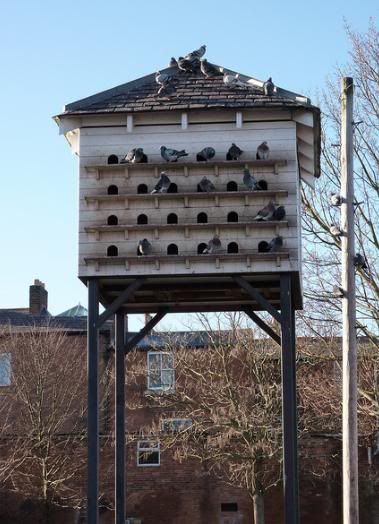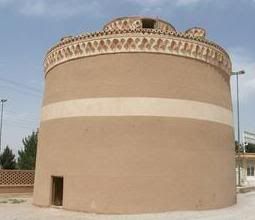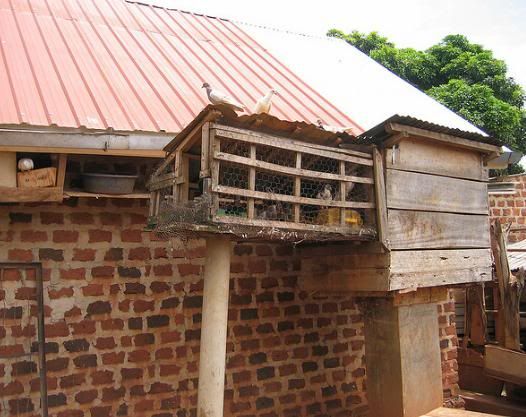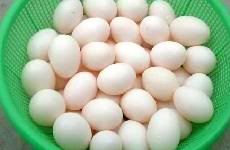
History of Raising Pigeons
Pigeons were one of the earliest domesticated livestock and their importance as a food source continued until the time of the industrial revolution. It is believed that they were domesticated starting 10,000 years ago and are mentioned in 5,000 year-old Egyptian hieroglyphics. Pigeon houses exist throughout the world but some of the oldest are found in the Middle East. The birds have been valued for their eggs, meat, and dung, which is an excellent fertilizer.
As compared to chickens, pigeons are easier to care for and can be eaten sooner. They forage for their own food and are edible in 28 days. Their houses protect them from predators.
Many nations including Scotland and the Middle East continue to house pigeons. Pigeon houses were found on plantations in the U.S. until the early 1920's. A few centuries ago in parts of Europe, pigeon meat was important especially for the winter months and only the aristocracy were allowed to raise them.
In the sad tale of the North American Passenger Pigeon's extinction, the bird went from being one of the most abundant birds in the world during the 19th century, numbering in the billions, to extinction in the early 20th century. Unregulated hunting, loss of habitat, deforestation, and use as commercialized cheap meat for slaves and the poor were contributing factors.
Examples of Pigeon Houses from around the world
A pigeon house may be referred to as dovecote, dovecot, doocot, pigeonaire, pigeonnier, colombier, tour-fuie, culvery, duivekot, columbaria, colomendy, or palomar. Many are free standing, from small to large, but others are built into tops or sides of barns or other buildings.
See the large variety of house types from around the world in the photos below:

photo ~ The Wadlington Pigeon House was built in 1857 on the Oak Grove Plantation in South Carolina. This house held 55 breeding pairs and had 112 access holes.

flickr via lori5871 ~ Virginia, USA

flickr via lydiashingingbrightly ~ Leamington Spa, Warwickshire, UK

Germany

photo: wikipedia

The island of Tinos, Greece has 1,000 artistic dovecotes (photo)

photo wikipedia ~ Doorn, The Netherlands

photo flickr via dynamosquito ~ 2008 ~ Midi-Pyrenees region, France

photo wikipedia ~ Glasgow, Scotland

Pigeon house for 4,000 pigeons in Iran (photo)

photo flickr via sarahemcc ~ Uganda

photo wikipedia ~ modern pigeon house in Brasília, Brazil

flickr via jay galvin ~ 2008 ~ Egypt

photo ~ Egypt

photo ~ Masada
Utility Pigeons
Some pigeons have been bred to be larger, specifically for their meat, and this group is called the "utility" pigeon. Breeds of pigeons preferred for meat are the King, Carneau, French Mondain, Homer and Swiss Mondain.

pigeon eggs
Young pigeons, or squab, become very large in their nests prior to flying and these are used for their meat which is tender, rich, nutritious, and mild-tasting.

King pigeons (photo)
Squab is served at some of the finest U.S. restaurants such as French Laundry. Examples of squab dishes are breast of squab (French salmis), Egyptian hamam mahshi (stuffed with rice and herbs), and Moroccan pastilla.

photo: Darin Dines
The greatest volume of U.S. squab, however, is sold within Chinatowns.
Raising Squab
Pair bond parents, beginning around eight months of age, incubate eggs for 17-19 days, and brood their squab for four weeks. Both parents produce a "pigeon milk" to feed their young. One pair can produce 15 squabs per year and ten pairs can produce eight squabs per month without being fed by their keepers. They forage and return to their dovecote to rest and breed. Mates will produce young year round for five to six years. In addition to foraging, pigeons can be fed bird seed, Flock Raiser, and corn.
Pigeon Dung or Guano
(N 4.2-6.5; P 2.4-3; K 1.4-2.5) Pigeon guano has higher nutrient values than other fowl manure. It should be composted prior to using. The usefulness of their manure has added to the overall usefulness of raising pigeons throughout the ages.
Also see: Japanese Quail or Coturnix: Protein from Small Spaces
Recommended reference for information about how to raise pigeons: Mother Earth News